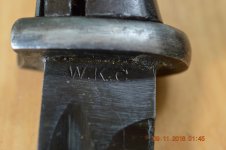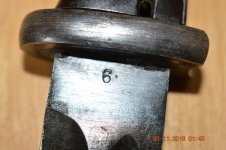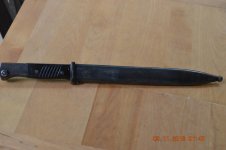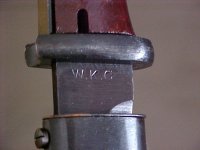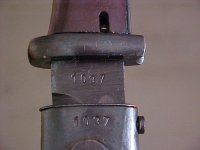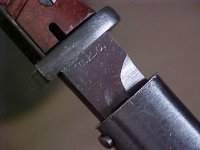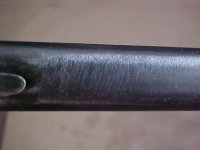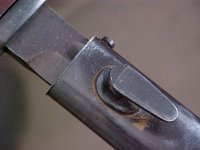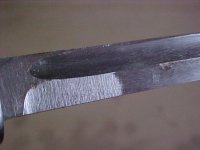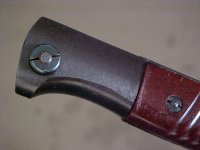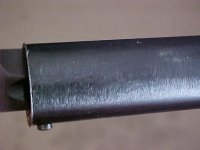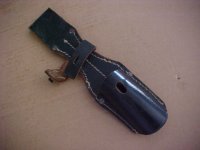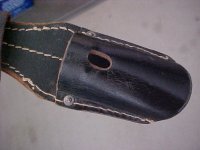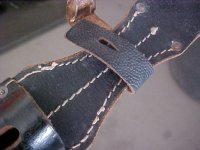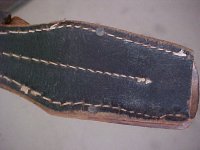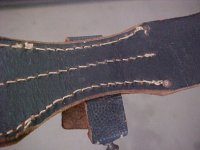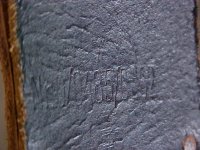Is there known information as to what groups specifically these bayonets were intended for? thanks.
Since so few WKC behoerden bear any additional markings, identifying the end users is difficult. However, one small lot (c.a. 1936) was contracted for by the SS. All examples have the early serifs on the letters and wooden grips. They made their way into the U.S. in the 1980s along with thousands of S84/98, Polish Mauser, Vz24, and others imported from the Balkans. These bayonets were almost uniformly in poor condition, and slathered in viscous grease. I saw the first example at the Great Western show in California, which came in a shipment of several hundred bayonets a collector/dealer had purchased from a distributor. The second turned up a few years later (found in a "bucket 'O bayonets") at a Florida gun show, for $20.00. I have the rubbing taken from the totenkopf found on the cross guard of that one. The example pictured is in Europe, so likely came from there and is the third (and best) one I know of. It is typical of nearly all the bayonets I saw, and IMHO a totally legitimate example based on the one I physically examined.
http://www.wehrmacht-awards.com/forums/showthread.php?t=728279
Now, there has been conjecture (with some strong evidence to support the possibility) WKC had a satellite factory at the Dachau KZL. Swords and other edged weapons for the SS were also made at this location. If one compares the later military contract bayonets
"cvl" with their WKC behoerden counterparts, it is readily evident they were not made on the same production line. The machine markings, finish, grips, etc. are not the same at all. Had these been made in the same factory, on the same tooling, they ought to share similar characteristics.
One other bit of corroborating evidence is from personal experience. At a O.G.C.A. show in the mid 1980s, I acquired five nearly new, late WKC behoerden, along with 4 very late, new but of "ratty" construction frogs, from one seller. He had these and a number of other items, on his table. When I inquired how he came to have the five similar bayonets and four frogs, he stated those items (and several others pointed out to me) came from the estate of a U.S. Army doctor whom had repatriated them from the Dachau KZL, during a three week stay in the camp to help alleviate the suffering of the remaining inmates. All the items were taken from storage areas within the confines of the camp. Based on the earlier SS accepted bayonets, and the Dachau KZL association, there appears to be some connection between WKC & the SS (not unlike the relationship between Steyrwerke and the SS). I once believed WKC behoerden may have gone to the Police as well. They did make stag-handle Police bayonets during the Wiemar era. However, I have yet to see a Police accepted WKC behoerden S84/98, but cannot say with certainty they do not exist. BTW, I still have one bayonet & one frog from the lot I purchased back in the day...



